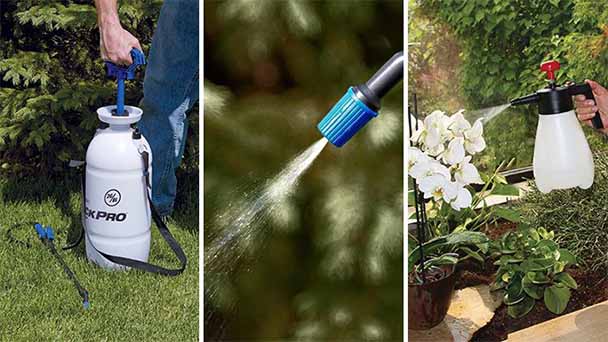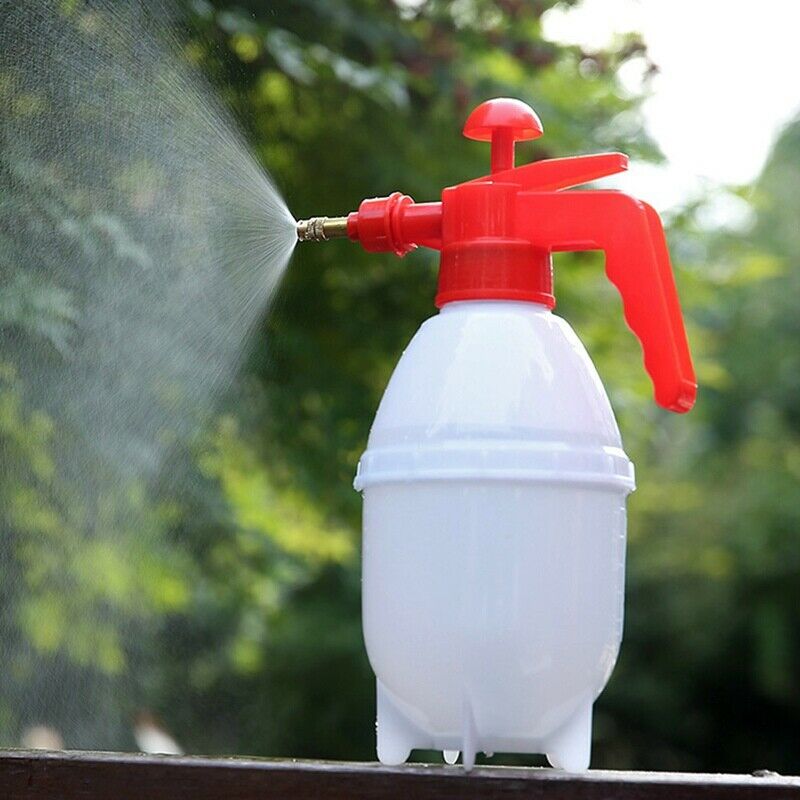Precautions of handheld Sprayer
Written by Joy
Sep 30 2020

Handheld compression sprayer (commonly known as watering can) is used for disinfection of pigeon lofts, sanitation and epidemic prevention, hotels, greenhouses, poultry houses, etc., water spraying and pest control for flowers, bonsai, nurseries, and practical bacteria, various perfumes and cleaning in rooms and public places spraying agent, detergent, etc. are essential products for gardening enthusiasts.
2. When using, you'd better unscrew the lid of the liquid bucket and put the liquid into the liquid bucket. The amount of liquid filled at a time must not exceed the water level. Excessive amount will cause insufficient air pressure. After filling the liquid amount, tighten the lid of the liquid bucket.
3. You should press the wrench a few times before pumping up, and after lubricating, pull the pumping rod to pump up the air. After pumping up several times, you can spray. The standard of pumping should be based on the start of the pump handle. 4. If you pump up too many times, the pressure will increase (the safety device will fail), and the barrel will burst, so you ought to pay attention to safety!
4. If you pump up too many times, the pressure will increase (the safety device will fail), and the barrel will burst, so you ought to pay attention to safety!
5. You should tighten the nozzle to spray, and loosen to spray far or straight. When the air is fully inflated and the spray is not sprayed, you have to check whether the nozzle is blocked or whether the nozzle cap is tightened too tightly. It should be loosened or cleaned, and no hard pressure is allowed.
6. After fully inflating, there is no spraying, and the nozzle is dripping. You should tighten the nozzle nut. After tightening, when there is a gap in the wrench, the water still leaks. Checking whether the O-ring in the plug rod is aligned is necessary. It should be aligned.
7. If you feel the frictional resistance of the plug rod is large when pumping up, you should unscrew the air barrel tube and apply petroleum jelly or other lubricating oil around the black rubber piston ring (this should also be the case when updating the O-ring) to make the pump feel Comfortable and can also extend the service life of the rubber ring.
8. If the O-shaped rubber ring at the junction of the gas barrel nozzle and the liquid barrel lid is aging and deformed, and this accessory cannot be purchased, it can be replaced by the raw material tape used when installing the water pipe.
9. When using, you should be careful not to come into contact with substances that chemically react with plastics, and you’d better not use liquid sprays that chemically react with plastics, and do not expose them to the sun for a long time, otherwise the bottle body is prone to aging and cause the bottle body to burst.
10. After each spraying, you should spray the equipment with clean water in time to prevent the residue from clogging. When not in use, the barrel should be loosened and deflated, and the liquid should be poured. You ought to pour out the agent and clean it with clean water. It's a good choice to apply petroleum jelly or other lubricating oil to the piston and sealing ring for the next use.
11. When buying a handheld compression sprayer, you'd better not just look for cheap but not for quality.
Characteristics of handheld Sprayer
The current handheld compression sprayer is beautiful in appearance, easy to use, good in atomization, and the nozzle can be adjusted, which can spray in a straight line, and can be near or far. The bottle mouth thread and bottle mouth rubber seal ring of the handheld compression sprayer are unified, the cylinder thread and the air pump apron are unified, and the nozzle assembly can be interchanged.Several precautions of handheld Sprayer
1. After buying the handheld compression sprayer, you can first apply a layer of petroleum jelly or other lubricating oil around the black rubber piston ring in the cylinder tube and the pump rod to prevent rust or malfunction.2. When using, you'd better unscrew the lid of the liquid bucket and put the liquid into the liquid bucket. The amount of liquid filled at a time must not exceed the water level. Excessive amount will cause insufficient air pressure. After filling the liquid amount, tighten the lid of the liquid bucket.
3. You should press the wrench a few times before pumping up, and after lubricating, pull the pumping rod to pump up the air. After pumping up several times, you can spray. The standard of pumping should be based on the start of the pump handle.

5. You should tighten the nozzle to spray, and loosen to spray far or straight. When the air is fully inflated and the spray is not sprayed, you have to check whether the nozzle is blocked or whether the nozzle cap is tightened too tightly. It should be loosened or cleaned, and no hard pressure is allowed.
6. After fully inflating, there is no spraying, and the nozzle is dripping. You should tighten the nozzle nut. After tightening, when there is a gap in the wrench, the water still leaks. Checking whether the O-ring in the plug rod is aligned is necessary. It should be aligned.
7. If you feel the frictional resistance of the plug rod is large when pumping up, you should unscrew the air barrel tube and apply petroleum jelly or other lubricating oil around the black rubber piston ring (this should also be the case when updating the O-ring) to make the pump feel Comfortable and can also extend the service life of the rubber ring.
8. If the O-shaped rubber ring at the junction of the gas barrel nozzle and the liquid barrel lid is aging and deformed, and this accessory cannot be purchased, it can be replaced by the raw material tape used when installing the water pipe.
9. When using, you should be careful not to come into contact with substances that chemically react with plastics, and you’d better not use liquid sprays that chemically react with plastics, and do not expose them to the sun for a long time, otherwise the bottle body is prone to aging and cause the bottle body to burst.
10. After each spraying, you should spray the equipment with clean water in time to prevent the residue from clogging. When not in use, the barrel should be loosened and deflated, and the liquid should be poured. You ought to pour out the agent and clean it with clean water. It's a good choice to apply petroleum jelly or other lubricating oil to the piston and sealing ring for the next use.
11. When buying a handheld compression sprayer, you'd better not just look for cheap but not for quality.
Latest Updated
- Benefits of Bugleweed - 7 Science-backed Health Benefits
- Bugleweed Dangers & Side Effects - Is It Poisonous?
- How to Plant Evergreen Trees - What You Should Know
- When to Plant Evergreens - Grow Guide for Evergreen Trees
- 12 Wonderful Evergreen Shrubs for Your Garden
- 12 Popular Evergreen Plants with Pictures for Beginners
- When And How To Prune A Lilac Bush Like a Pro
- How to Grow & Care for Lilac Vine (Hardenbergia Violacea)
- Japanese Lilac Tree (Syringa Reticulata) Care & Propagation Guide
- Shumard Oak Pros and Cons - What to Know
Popular Articles
- Winter maintenance of Antirrhinum Majus
- How to Grow Terminalia Mantaly Tree
- How to Grow and Care for Crossostephium Chinense
- How to grow Antirrhinum Majus in spring
- Peristeria Elata (Dove Orchid) Profile: Info & Care Guide
- Underwatered Snake Plant (Sansevieria Trifasciata) - Signs And How To Fix
- How to Care for Brazilian Jasmine Plant (Mandevilla Sanderi)
- How to Grow & Care for Graptopetalum Purple Delight in Summer
- Rosa Chinensis (China Rose): Plant Growing & Care Tips
- How to Care for Baby Sun Rose (Aptenia Cordifolia)